Danelectro Longhorn Bass (1/2)




This is an Evets '90s-vintage original reissue, made in Korea. These reissues are actually much better instruments than the originals from the 1960s. While a copper-burst would be more authentic, I like the sky blue better. The newer reissues are even more true to the originals.
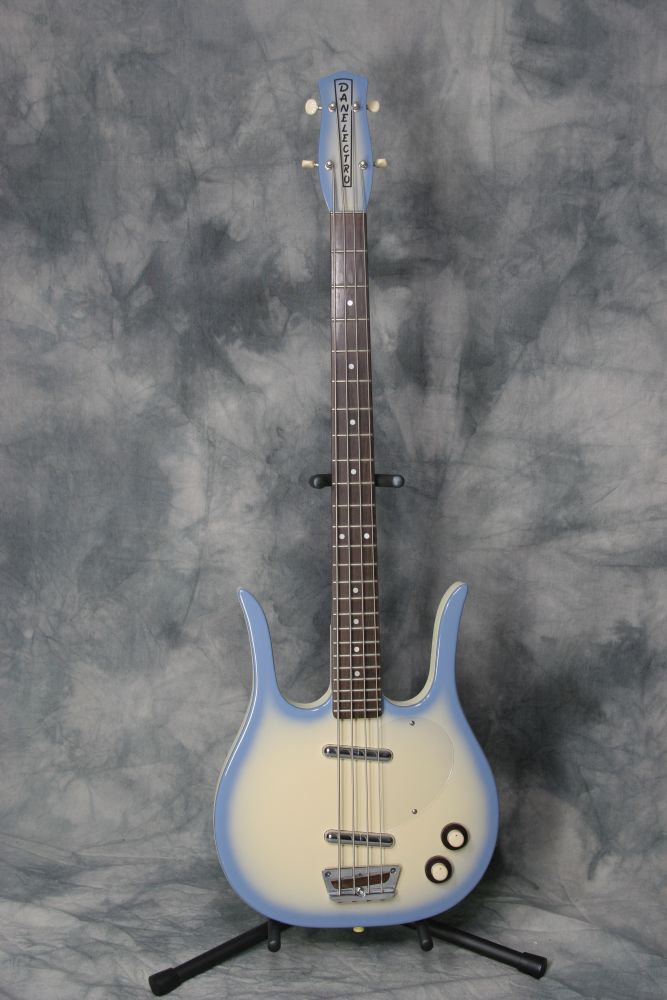
If the serial number means anything on these instruments, it would appear to have been made in 1999. Above is a picture of it shortly after I got it. Note the clear pickguard. Below is a much more recent picture. Note how the bridge has holes for the strings, not notches.
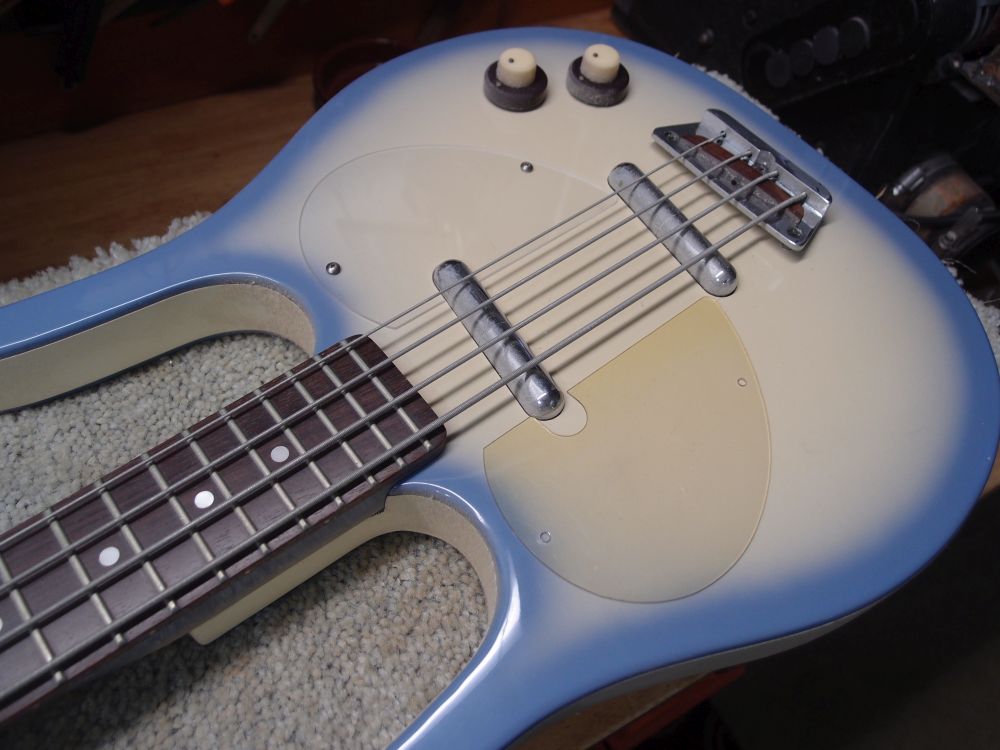
As you can see, over the years, the pickguard yellowed noticeably. I guess the Chinese do not have a monopoly on bad plastic. So while I was working out what to do about the brown pickguard on the Hornet, I took a few minutes and banged-out a replacement for this from the same material. Looks much better. I also used this acrylic material from the hardware store on the Longhorn guitar, and it shows no sign of yellowing after over ten years.
On the other hand, look at the finish on this Korean-made instrument, and the quality of the rosewood. The fit and finish are flawless. These are supposed to be cheapies. The only real problem with all of the Danelectro reissues is the binding. It's a certainty that I replaced the vinyl tape binding on this one at some point, as it is 100% going to pull out inside those crazy horns, and this shows no sign of that. The vinyl shrinks over time, and possibly also from the adhesive.
Years ago, you could get factory replacement stuff, but it's all long gone now, and just as well. I've worked out much better ways of doing this. I also added vintage-style folded-foil noise shielding inside, which honestly made no difference. Lipstick pickups are pretty quiet all by themselves. Finally, a sharp eye will notice that I filled the marker holes in the knobs with tiny brass nails. This is actually vintage-correct, and a nice little touch.
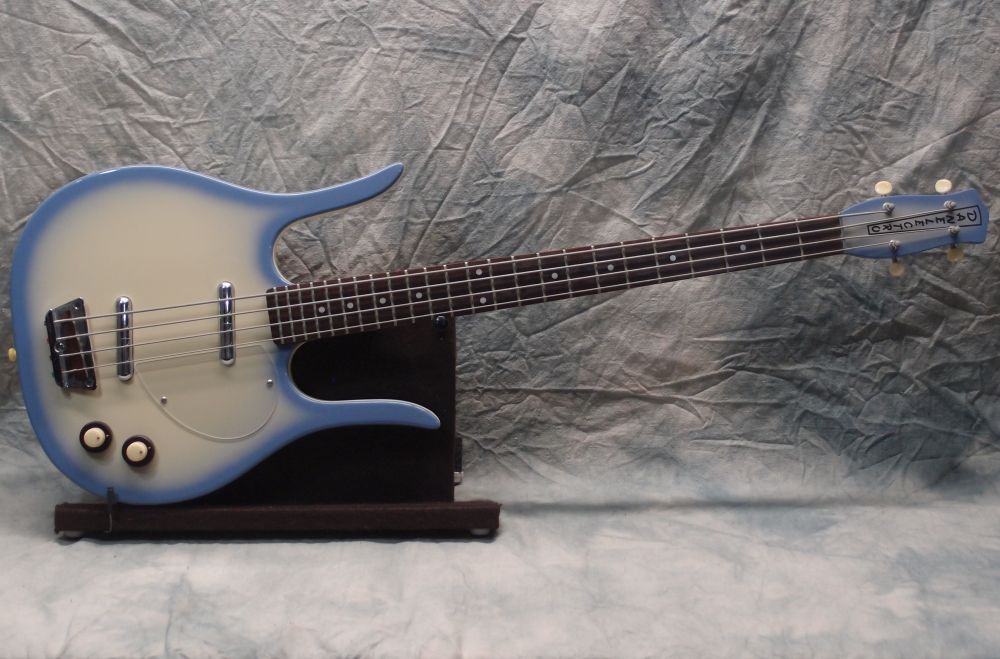
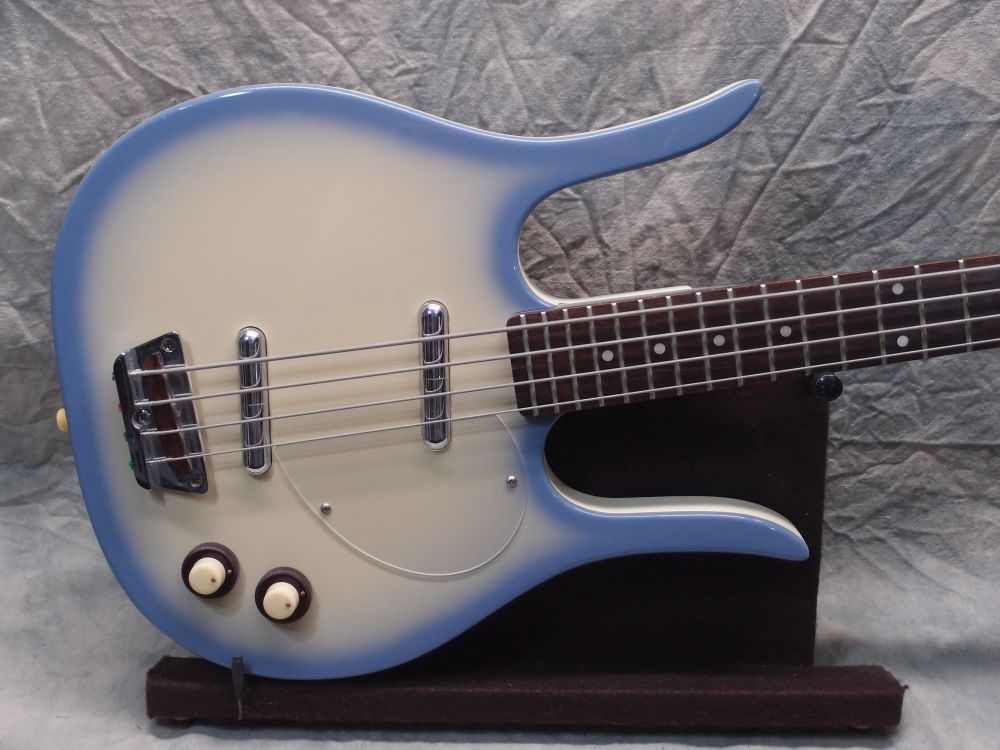
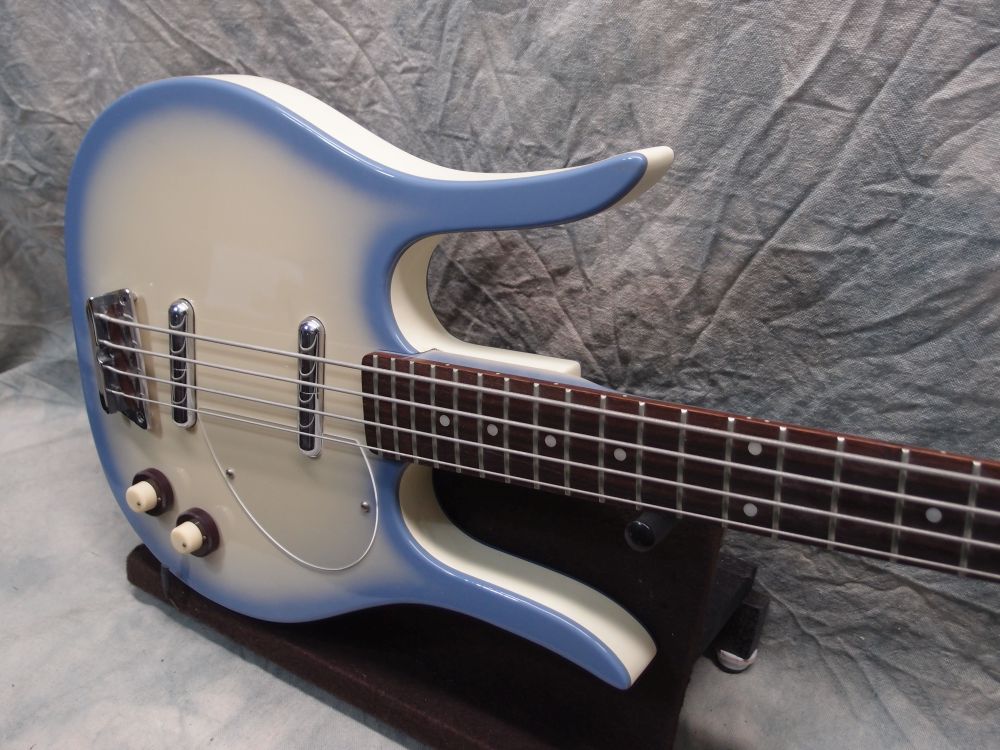

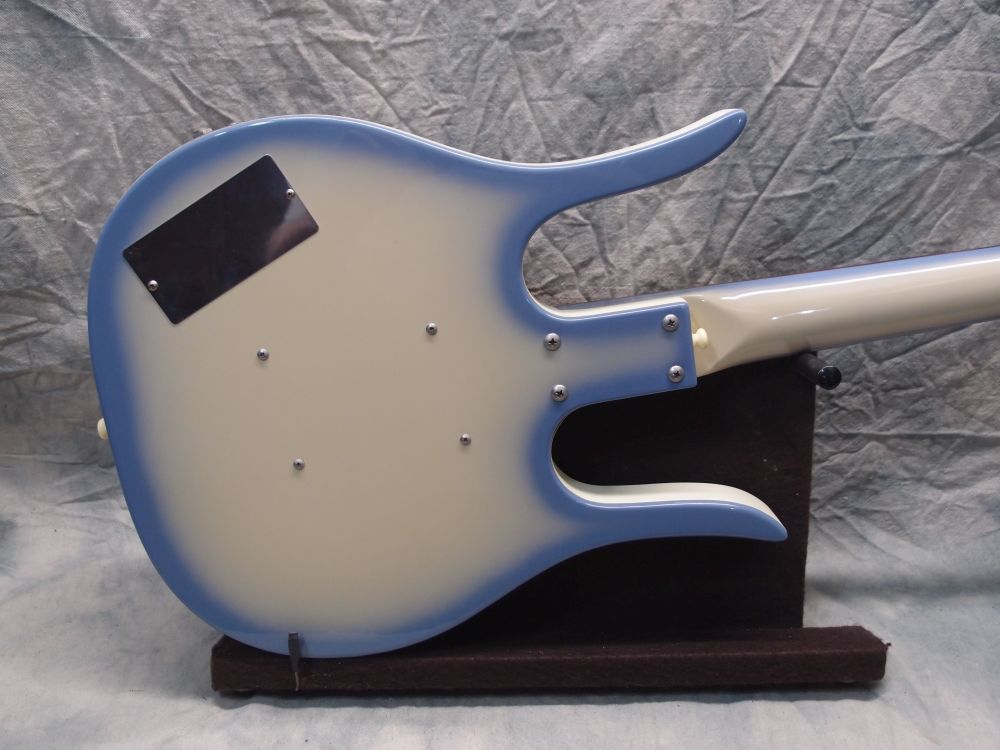
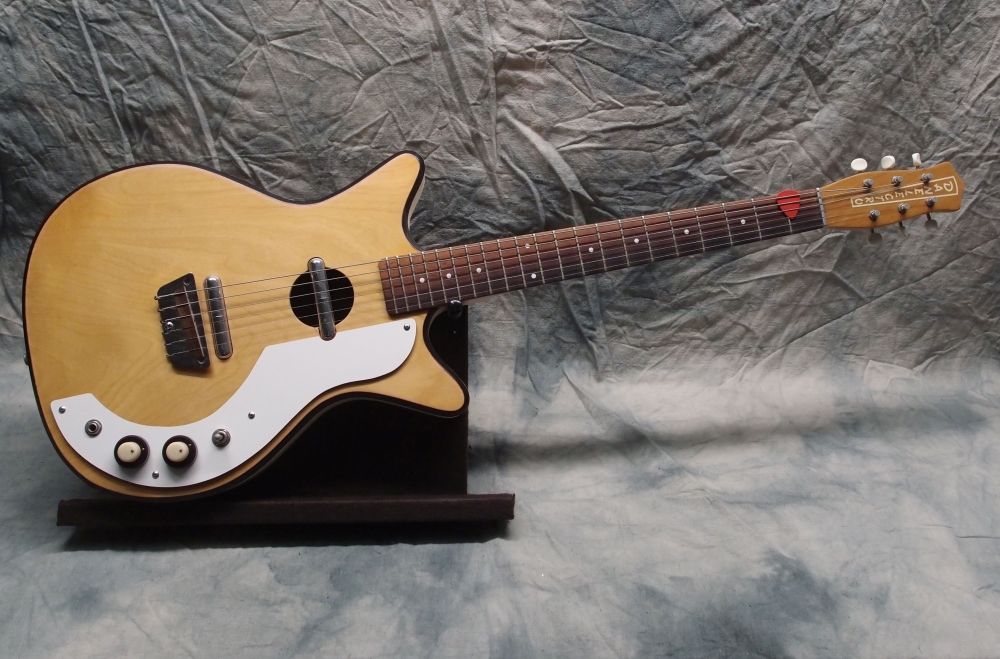
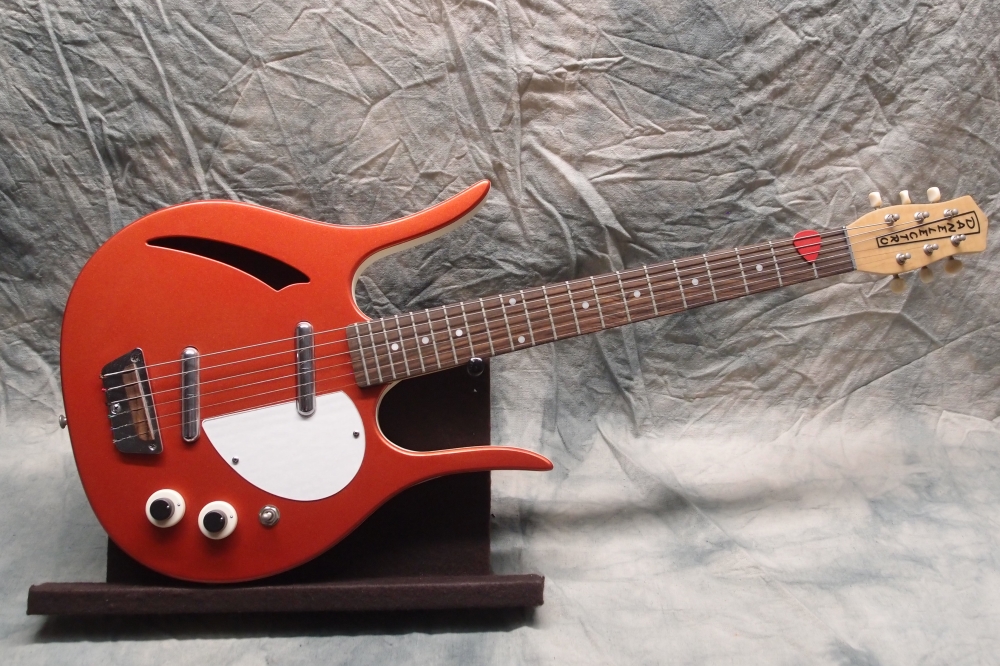
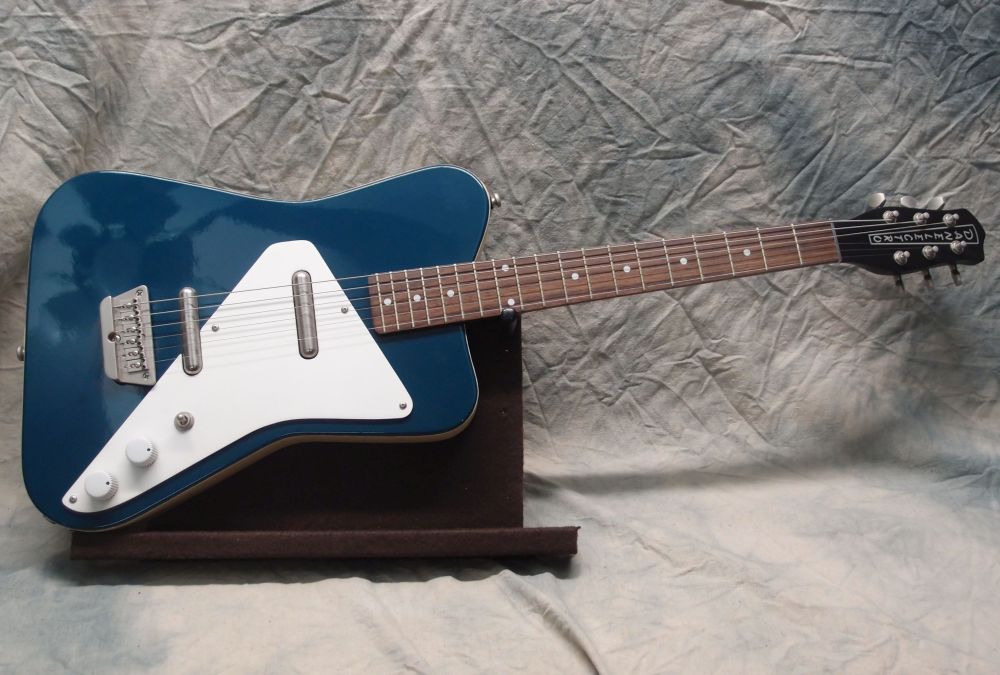
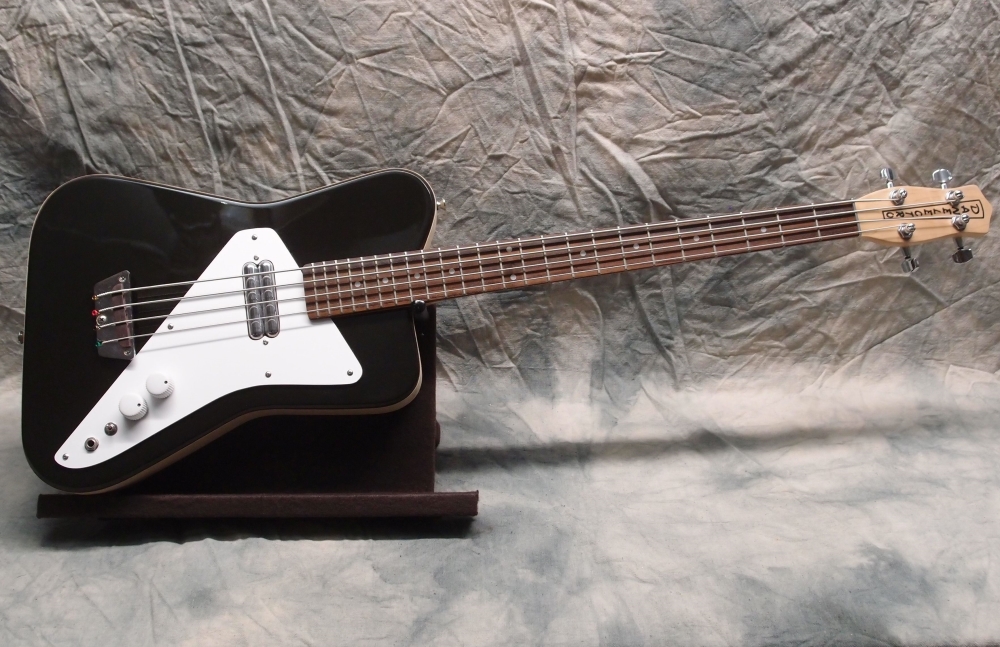
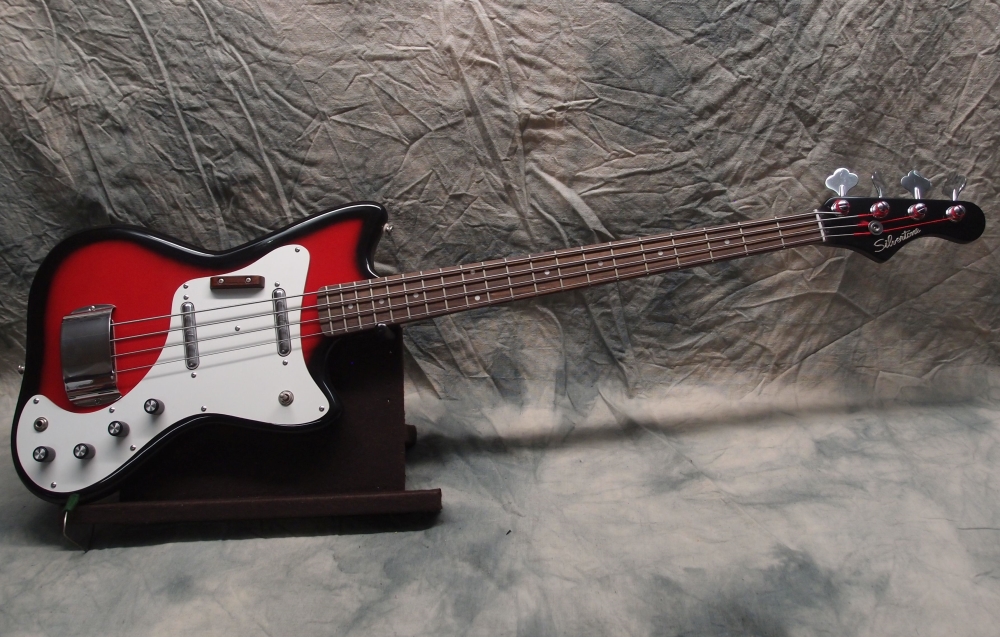
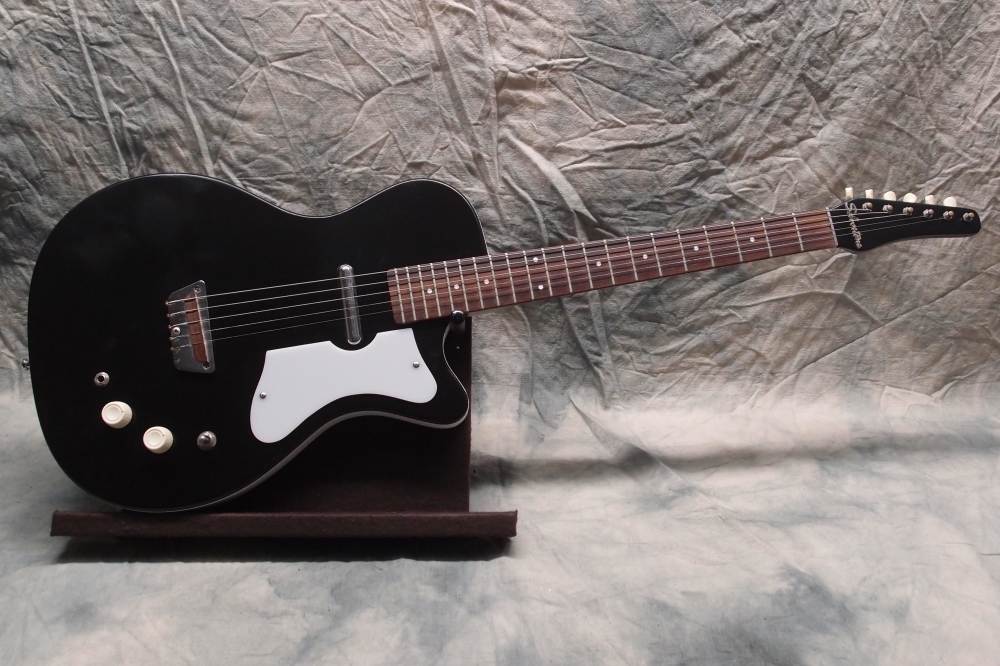
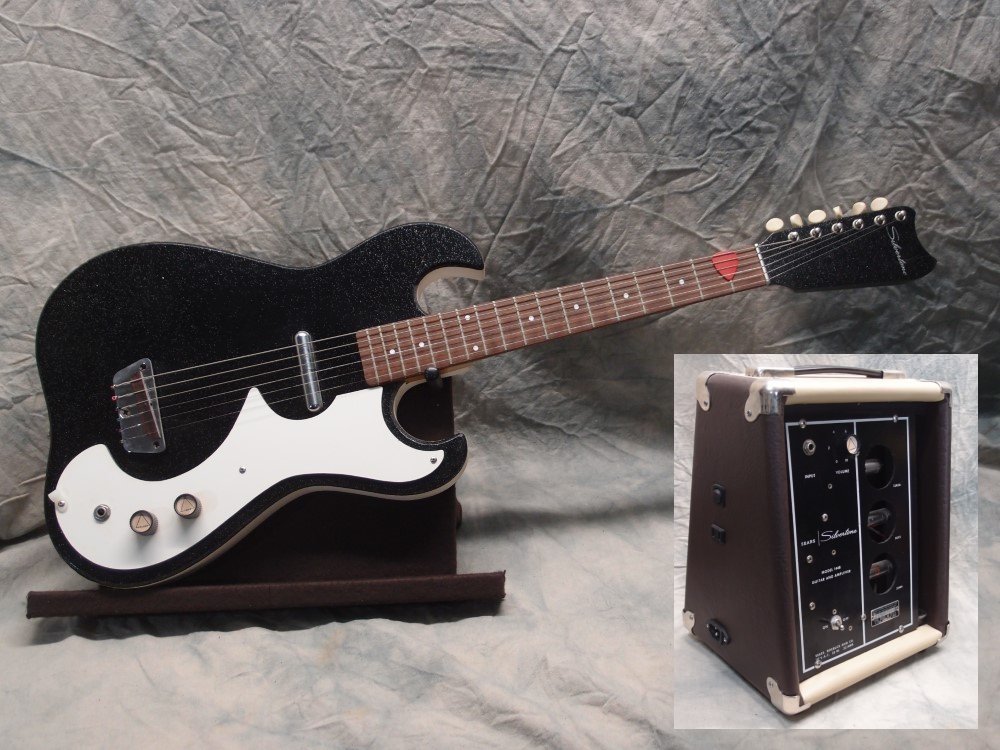
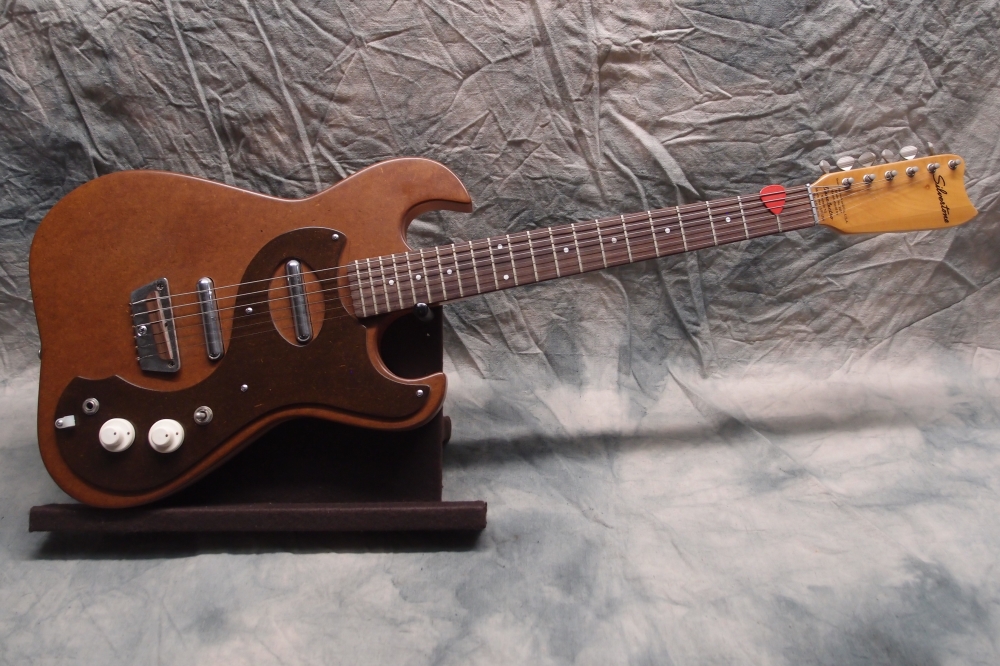
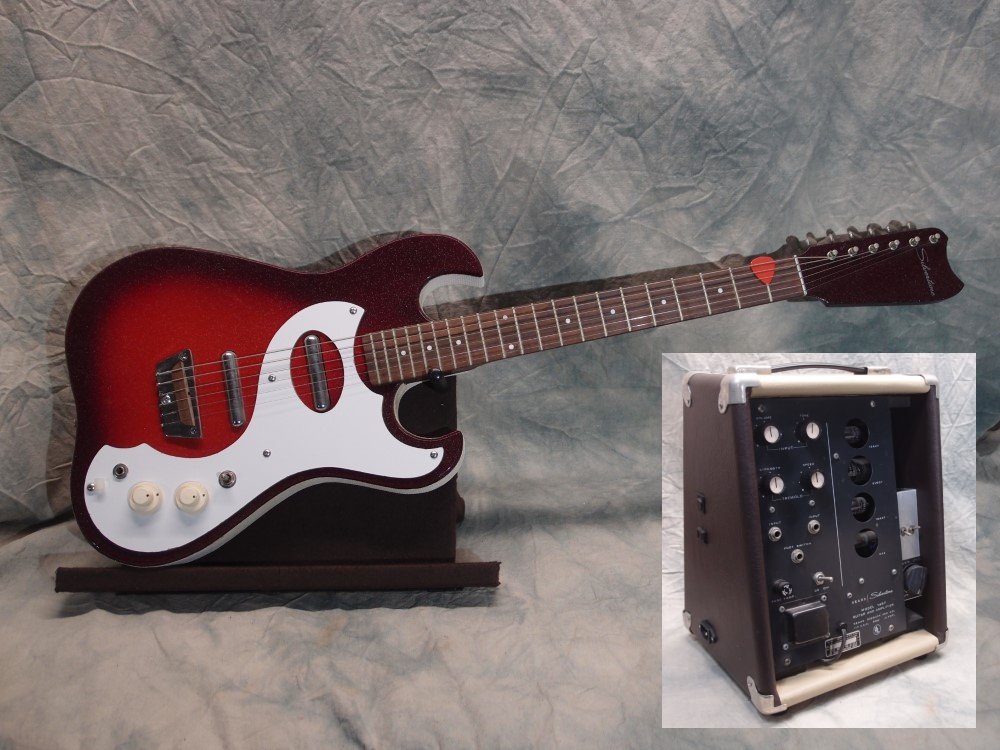
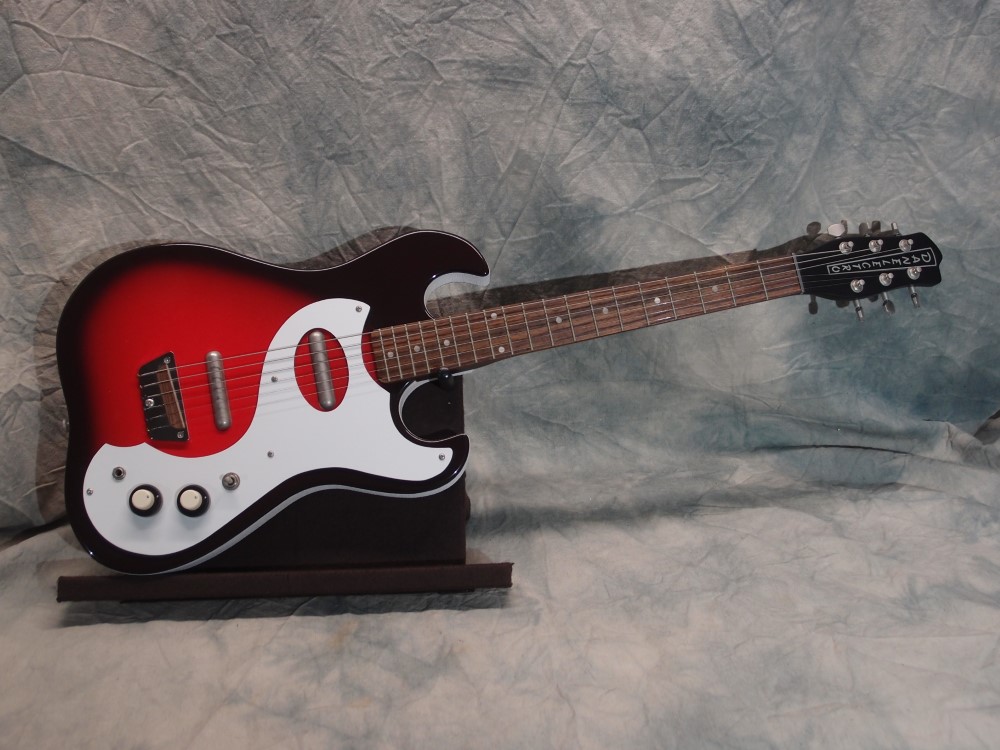
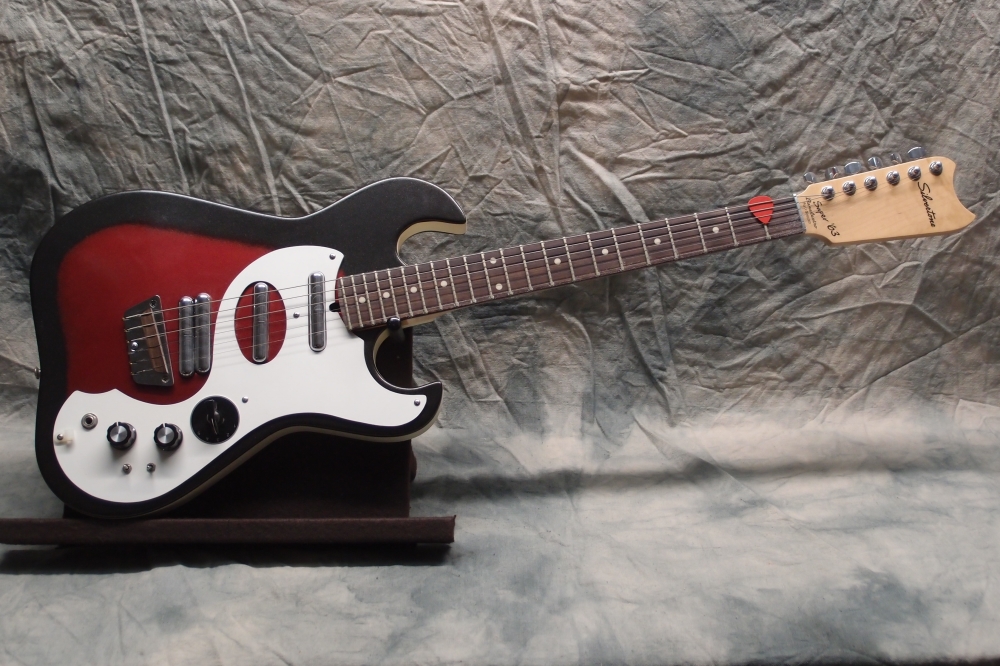
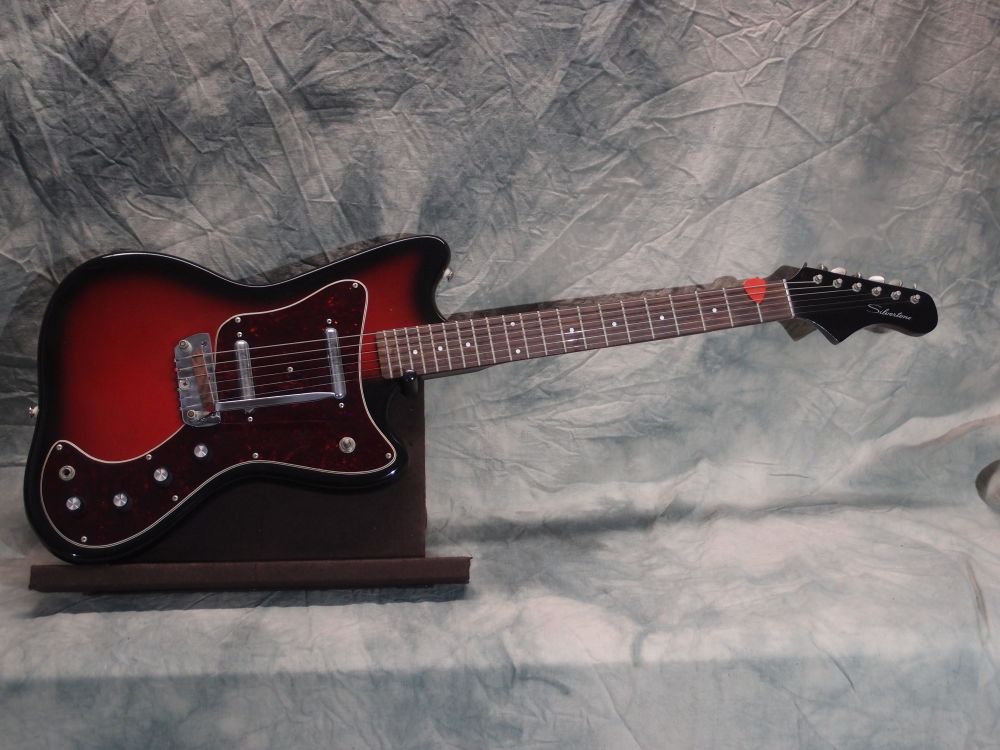
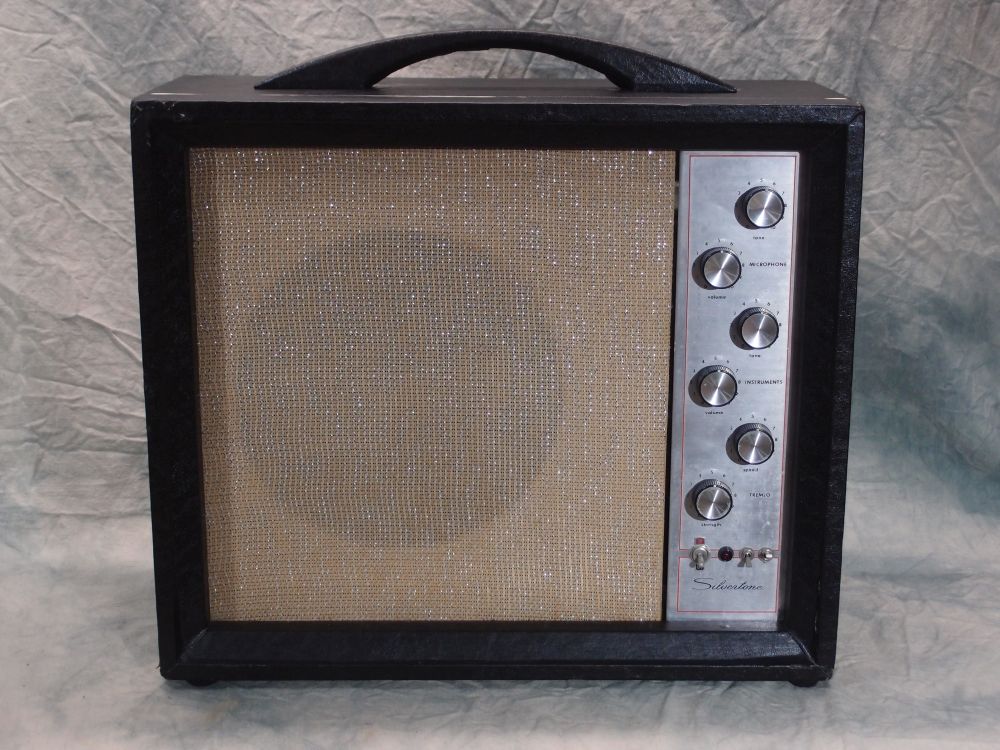
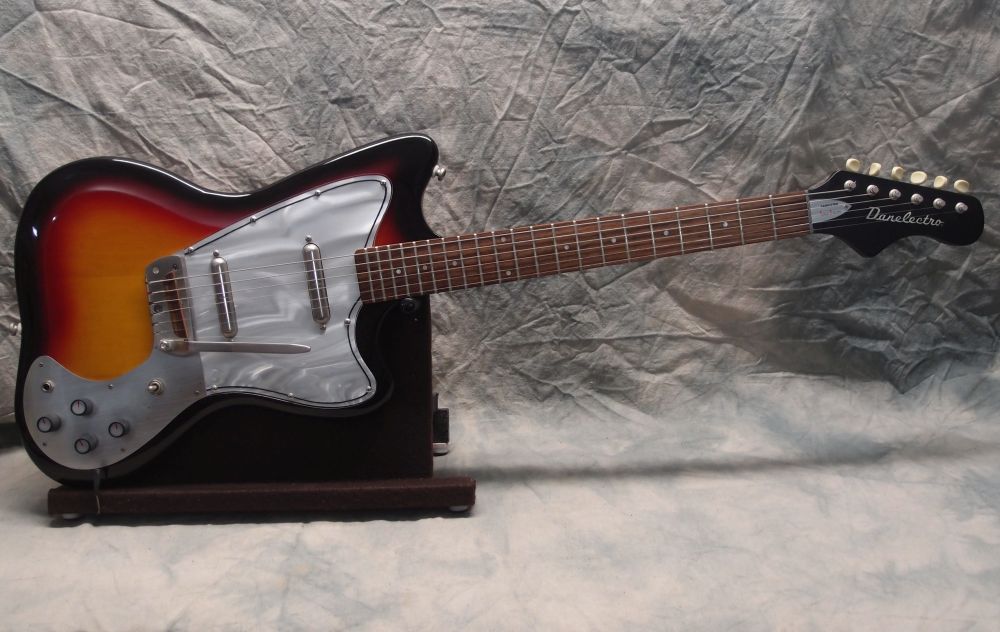
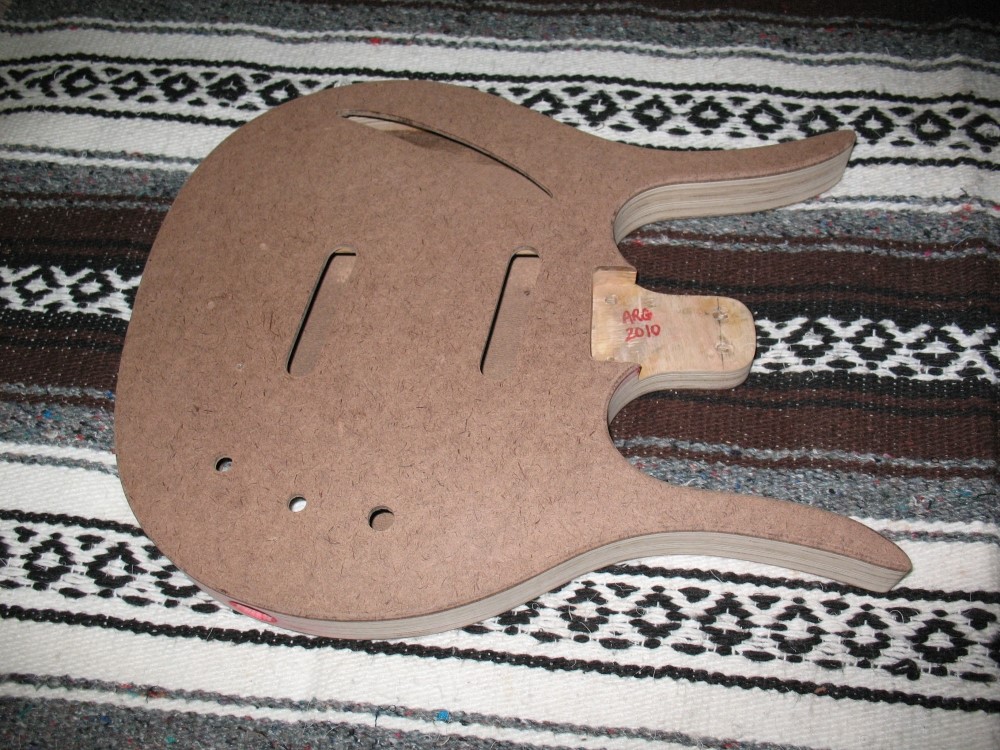
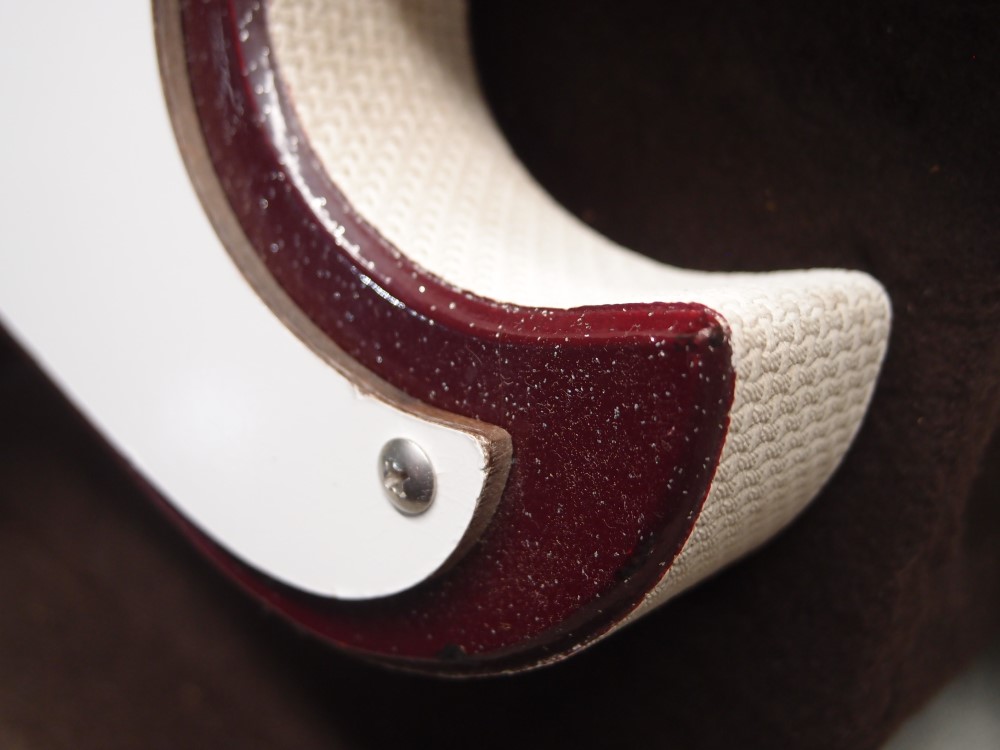
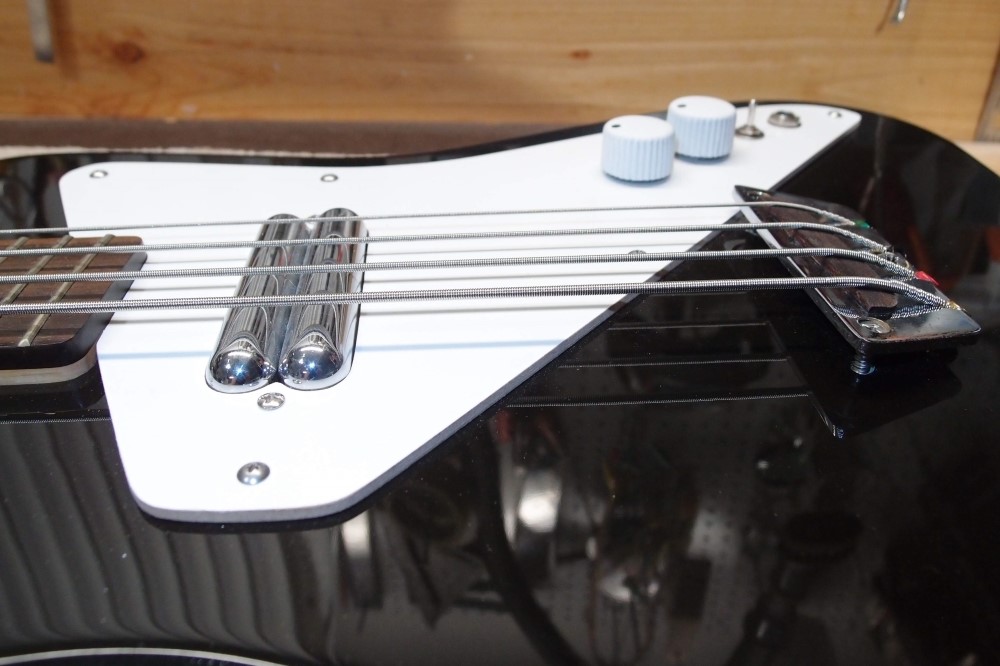
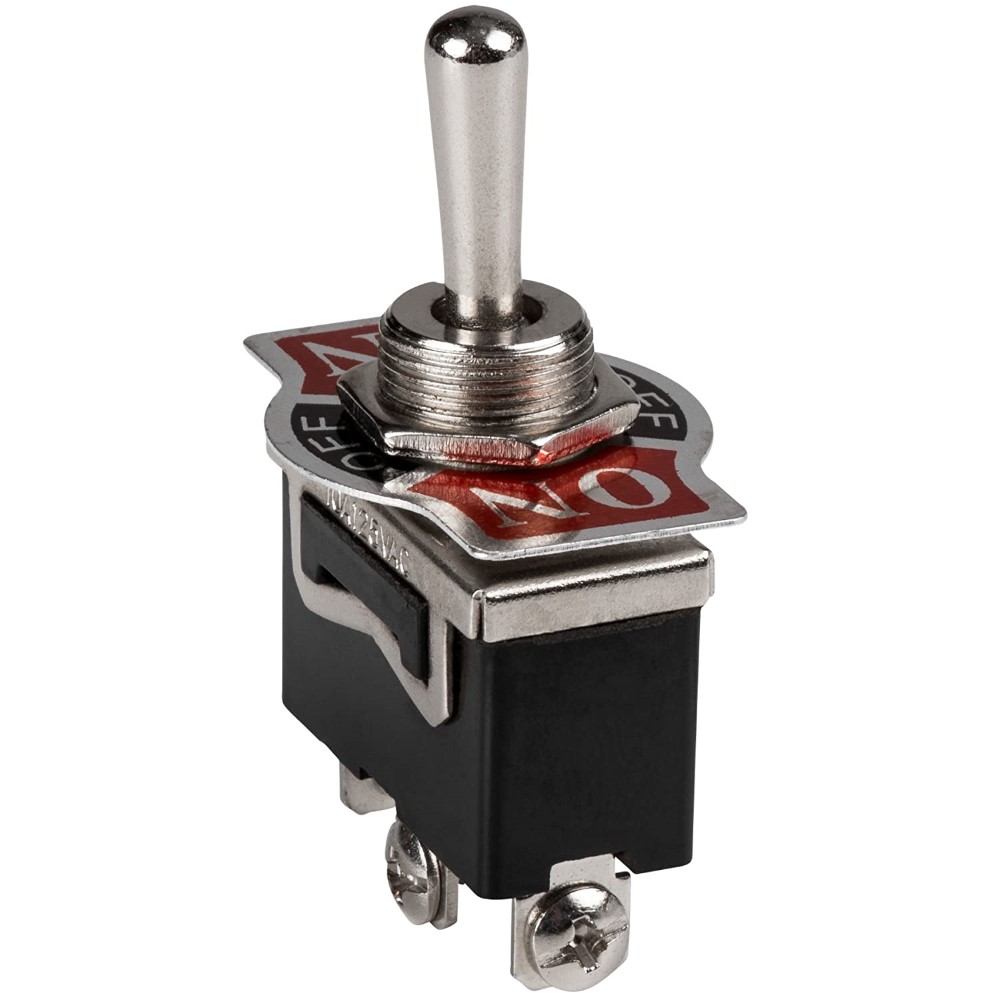
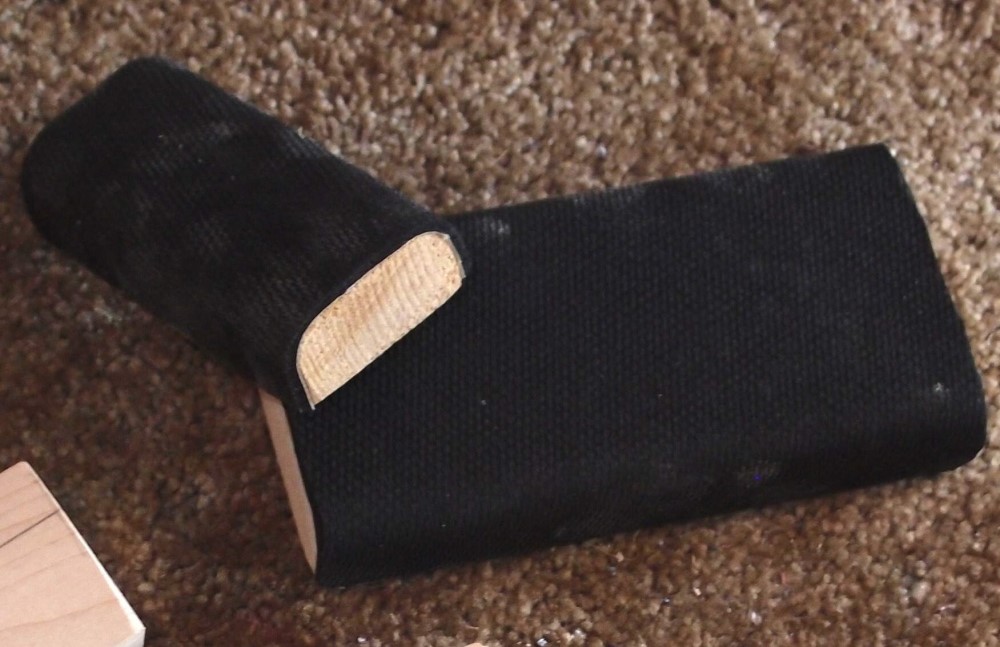
Questions or Inquiries?
Just want to say Hello? Sign the .